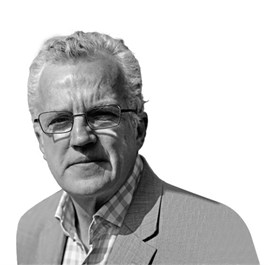 Peer review: Christian Wolmar
Peer review: Christian Wolmar
Transport writer & broadcaster
Mike Jones has made a valiant attempt to answer the Wolmar question of ‘what are franchises for?’ But unfortunately he has failed at the first hurdle. The key point that protagonists of the existing complex and expensive system must answer is whether this model, developed to create on-rail competition that was then effectively ruled out, is the best way of delivering rail services.
Even a superficial analysis will reveal that it is not, which is why there have been so many changes to the system over the years, as Mike outlines. The collapse of the West Coast franchise exposed more than just the frailties in that particular process, it went to the very heart of the weaknesses at the core of the whole concept - of treating our railways like
McDonald’s outlets.
The conundrum of long versus short franchises has never been answered. Long ones require far too much crystal ball gazing, and consequently the private sector cannot take the full revenue risk. Short ones have the disadvantage of being too short-term, preventing any prospect of investment and creating upheaval for the staff and (possibly) the passengers.
The second conundrum that Mike fails to answer is over the amount of freedom to be given to the franchisees. Again, there are negatives on both sides. Give the operators too much, and the profit-maximising entities that win the contract will take advantage and exploit their monopoly position. Give them too little, and they will complain that they cannot make use of the private sector expertise.
Note that taking into account the network grant, all the operators (ironically with the exception of the publicly owned East Coast) are supported by public money, even if indirectly. And they are providing a public service - what economists call a public good. Therefore they will always need to be regulated, and therefore the notion that there should be ‘less interference’ from government is a nonsense.
Mike’s point about profitability is wrong, too. Since train operators make very little investment, there is no cost of capital. Yes, there is the bond, but that does not justify the profitability of the train operators, which is likely to be higher than the usual stated amount of £250 million (or around 3%) annually, since there are internal costs allocated to parent companies that are not transparent.
Capitalism should reward investors or risk takers, like the Victorian companies that built the railways, but today’s train operators do neither.
Finally, he ducks the issue of foreign state-owned companies making profits out of our railways, and therefore subsidising their own networks from ours. How can that be justified?
In order to demonstrate the value of franchising, Mike would have to show that it is undoubtedly superior to other ways of running the railway. In fact, by entrenching the separation of operations and infrastructure, created to allow for open access operators who (apart from a couple of exceptions) were then effectively barred from the railway, franchising does the railway a disservice.











